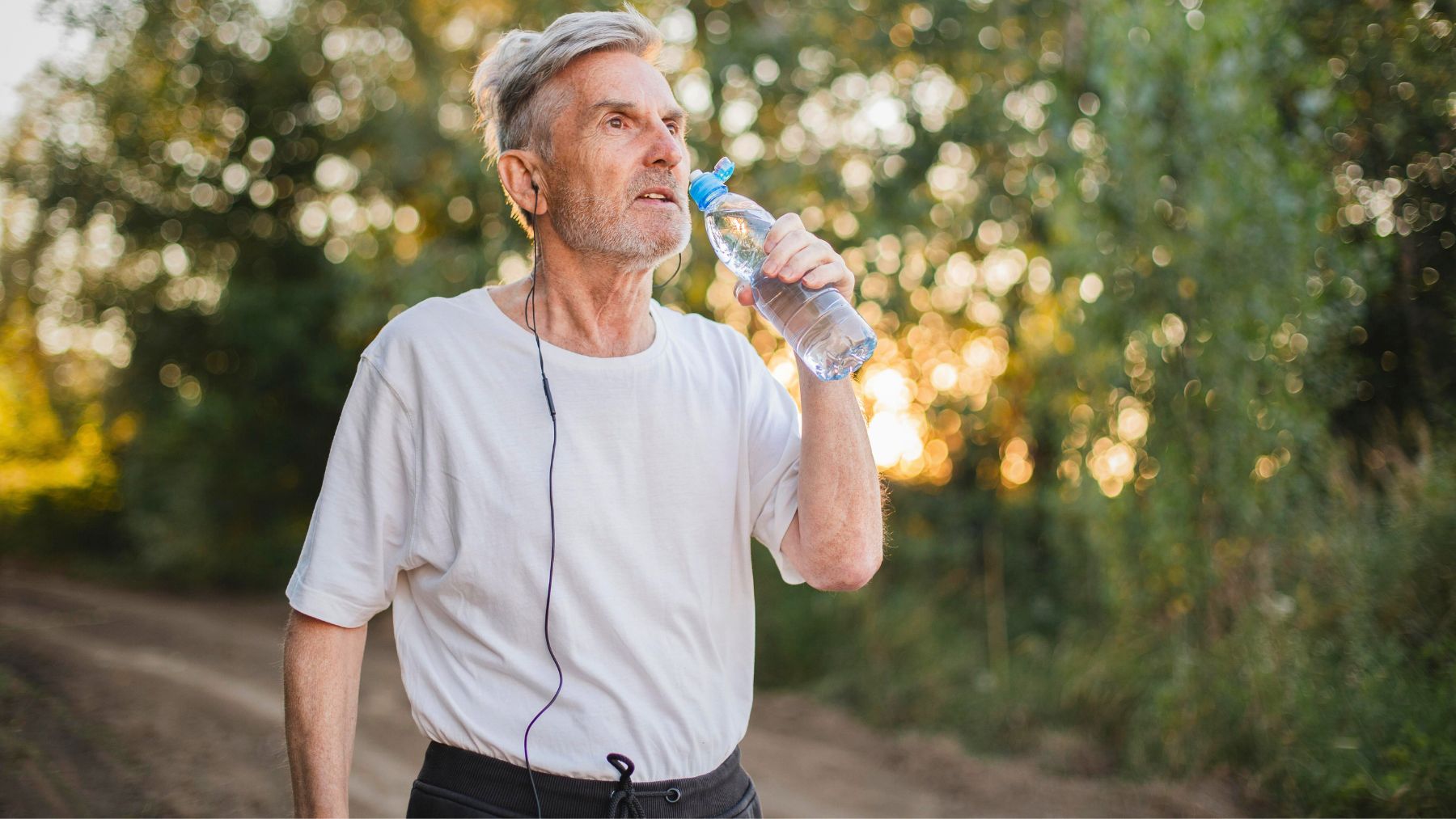We constantly hear “drink more water“, but for adults over 65, it’s not casual advice – it is a vital requirement with a clearly defined goal. The evidence from geriatric nutrition indicates that a daily intake of around 1.5 liters (approximately 6 cups) of fluids, predominantly water, is essential. As the aging process alters physiological functions, supporting fluid balance becomes critical for optimal cellular function and metabolic regulation.
Hydration is fundamental to the operation of vital systems such as the cardiovascular, renal, and cognitive networks. Here, we’ll examine why the natural thirst mechanism diminishes with age, explore the serious consequences of dehydration, and outline practical strategies to achieve the recommended water intake.
Why it’s important to drink more water after 65
As we age, the body’s innate signal for thirst weakens, making it less effective as an indicator of hydration needs. Seniors may not experience the intense cue to drink even when their system urgently requires water. This normal aspect of aging, influenced by factors such as reduced kidney efficiency and altered hormone regulation, conceals potential risks.
This diminished thirst sensation, compounded by factors such as medication side effects, chronic conditions like diabetes and hypertension, and changes in metabolic efficiency, creates a hazard among older adults. It’s not simply about experiencing dryness; chronic suboptimal hydration places excess strain on the cardiovascular system, forces the heart to work harder, and weakens the immune response.
Besides, insufficient fluid intake can impair kidney function and even contribute to cognitive disturbances such as confusion or dizziness. Adhering to a steady intake of around 1.5 liters daily is crucial to ward off these complications and sustain your vitality.
Simple ways for seniors to sip more water every day
Because thirst is no longer a dependable signal, integrating active hydration into your daily routine is essential. Here are practical steps to help you reach your daily water goal:
- Start strong: Drink a full glass of water first thing in the morning. Overnight, your body uses stored fluids, so replenishing them immediately supports metabolic balance and kick-starts your day.
- Keep it close: Always have a water bottle or glass within easy reach. This visual reminder prompts you to sip regularly. A large bottle (around a 1-liter size) can serve as a progress tracker; aim to finish one and a half by bedtime.
- Pair it up: Enjoy a glass of water with every meal and snack. This reinforces hydration and complements your nutritional intake.
- Flavor naturally: If plain water seems monotonous, enhance its taste by adding slices of lemon, lime, cucumber, berries, or fresh herbs such as mint.
- Balance other drinks: If you enjoy a cup of coffee or tea, accompany it with a glass of water to counterbalance any dehydrating effects.
- Eat your water: Incorporate water-rich foods like cucumbers, melons, oranges, berries, lettuce, and soups into your diet.
Focusing on consistent, modest sips throughout the day is far more effective than attempting to drink large amounts all at once. These strategies make reaching the 1.5-liter target manageable for older folks. While water remains the best option, other unsweetened beverages such as herbal tea also contribute to your daily fluid total.

